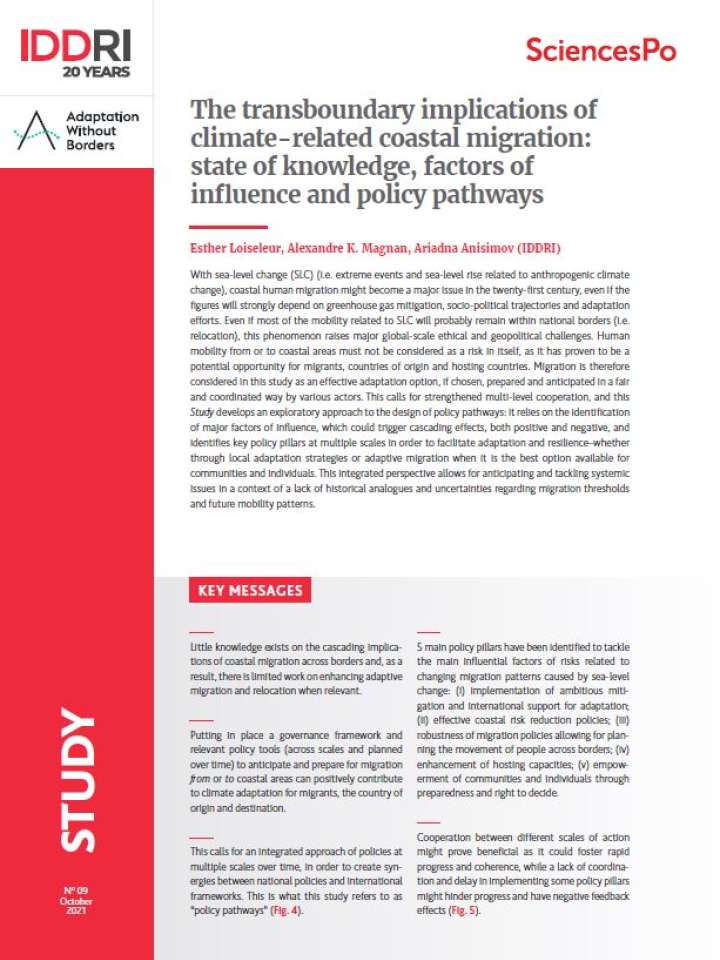The transboundary implications of climate-related coastal migration: state of knowledge, factors of influence and policy pathways
In this study, migration is considered as an effective adaptation option, if chosen, prepared and anticipated in a fair and coordinated way by various actors. This calls for strengthened multi-level cooperation, and this paper develops an exploratory approach to the design of policy pathways. It relies on the identification of major factors of influence, which could trigger cascading effects, both positive and negative, and identifies key policy pillars at multiple scales in order to facilitate adaptation and resilience–whether through local adaptation strategies or adaptive migration when it is the best option available for communities and individuals. This integrated perspective allows for anticipating and tackling systemic issues in a context of a lack of historical analogues and uncertainties regarding migration thresholds and future mobility patterns.
Key messages of the report include:
- Little knowledge exists on the cascading implications of coastal migration across borders and, as a result, there is limited work on enhancing adaptive migration and relocation when relevant.
- Putting in place a governance framework and relevant policy tools (across scales and planned over time) to anticipate and prepare for migration from or to coastal areas can positively contribute to climate adaptation for migrants, the country of origin and destination.
- This calls for an integrated approach of policies at multiple scales over time, in order to create synergies between national policies and international frameworks. This is what this study refers to as “policy pathways”.
- 5 main policy pillars have been identified to tackle the main influential factors of risks related to changing migration patterns caused by sea-level change: (i) implementation of ambitious mitigation and international support for adaptation; (ii) effective coastal risk reduction policies; (iii) robustness of migration policies allowing for planning the movement of people across borders; (iv) enhancement of hosting capacities; (v) empowerment of communities and individuals through preparedness and right to decide.
- Cooperation between different scales of action might prove beneficial as it could foster rapid progress and coherence, while a lack of coordination and delay in implementing some policy pillars might hinder progress and have negative feedback effects.
Explore further

